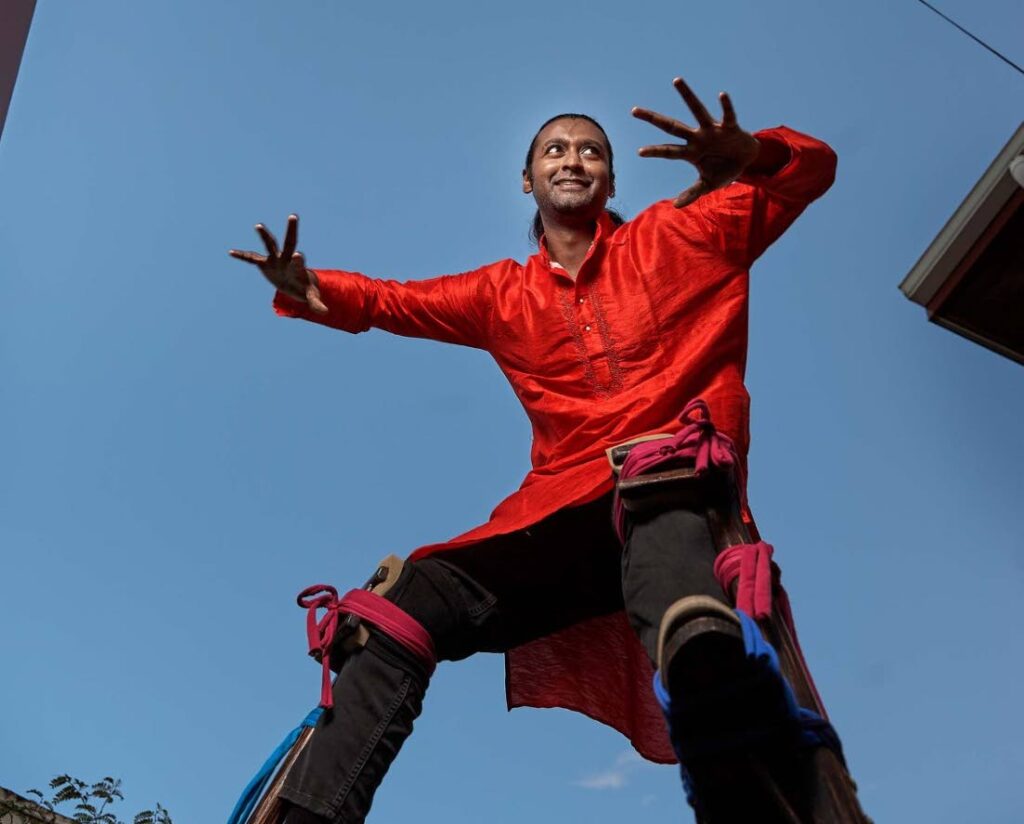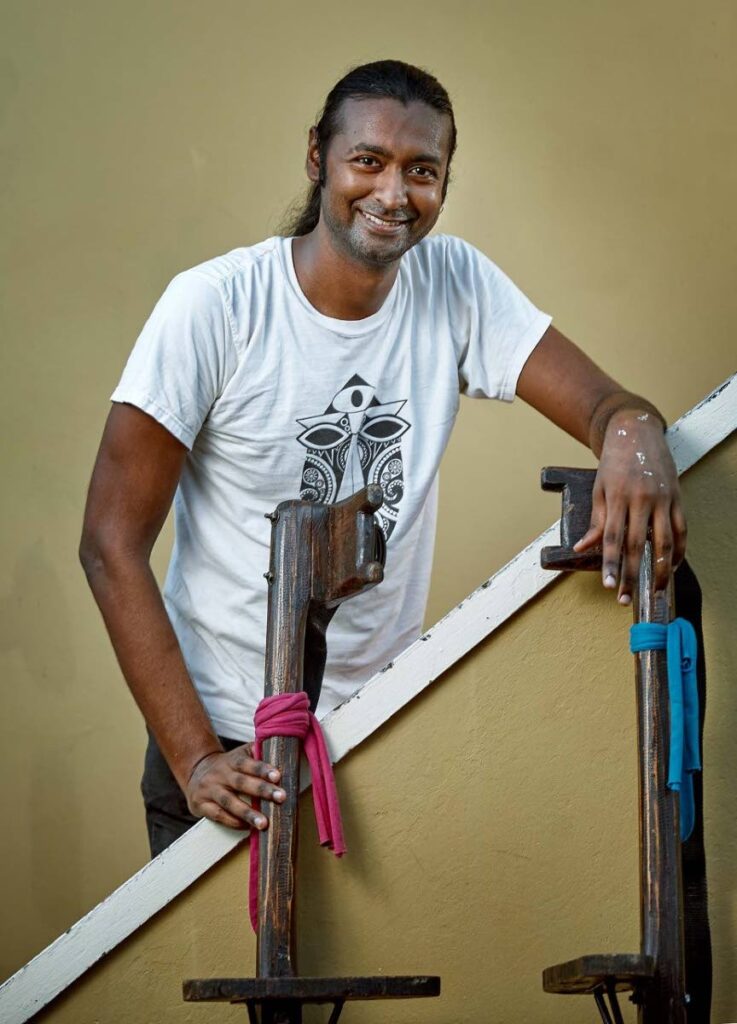An encyclopaedia gone in a snap

AS TOLD TO BC PIRES
My name is Shaun Rambaran and I’m trying to take enough photographs of Trinbago that
something survives for future historians to remember.
Now I’m in Cobotown, but since my early life there, something about St James always feels like home. My mom living there again adds to that feeling.P
Cobotown used to be the ort of Spain coastline before many late-1800s land-reclamation projects. I’m hoping climate change doesn’t allow the sea to “reclaim” it right back!
We lived opposite the St James Police Barracks. Hosay and Carnival traipsed right outside our gate!
My aunts would deposit “the chirren” by us. And my cousins would stay over and we’d play all Carnival weekend, running out to maco when a music truck came blasting and shaking up the whole house.
My immediate family is very small: mom, sister, brother-in-law and nieces make up my closest peoples.
Seeing the lives of close friends whose “chirren” are growing up into cool new little humans, I’m open to the idea of a family of my own now. Maybe.
I have to figure out the story of my dad myself, so I don’t have much to say. I don’t think he’s a bad person. He and my mom just weren’t compatible. When I was 11 or so, he moved into the bush. And Mom took on working by day and sewing by night to make ends meet for my sis and me. Good single parents are absolute heroes!
I spent my childhood and adolescence in books. Mostly non-fiction, encyclopaedia, and, truthfully, I did read the dictionary.
I also really love old magazines, like the ones in the doctor's office where my mom worked. National Geographic, with its beautiful photographs, Reader’s Digest, home-maker mags, and the cool medical pamphlets.
Pity there wasn’t more local content. I’d love to get my hands on a collection of the longtime Trinidad Carnival magazines with Roy Boyke’s photographs.
I’d gone to Newtown Boys, then Fatima College, but I never really got along with the Fatima folks.
I wasn’t into cars and football, didn’t listen to the popular music of my generation, didn’t go liming, didn’t have stories of flexing on girls. Although most of their stories were (probably) made up.
I wasn’t religious. I preferred to read and draw than socialise. After sixth form, I met Diego Sec people who became actual, lifelong friends. So now I openly lie and tell people I went Diego Sec.
I was raised RC, but around age 14, I stopped believing.
Why should one religion be right and the others wrong? Burning in hell in pain, suffering and torture, immolated skin, deathlessly for all of eternity? Purely by the chance to be born into the wrong faith?
But I definitely don’t disrespect other people’s religions or gods. It’s all culture, and it’s all fascinating.
On this tiny island, we get to experience so much of the world through the many heritages of our people. Living in Trinidad is its own encyclopaedia!
Throughout the pandemic, my friend Catherine Sforza and I dedicated Thursday as reading and research days at the Nalis Heritage Library, poring through old magazines, books, articles and accounts of longtime Carnival.
Favourite reads include Terrence Farrell’s We Like It So? (Please, all Trinis read this book!) Paul Keens Douglas’ Twice Upon a Time, Harper Lee’s To Kill a Mockingbird and Douglas Adams’ A Hitchhiker’s Guide to the Galaxy.
And The Carnivals of Trinidad and Tobago, from Inception to Year 2000. I have massive, massive respect to Michael Anthony for pulling that off. It must have taken him years – decades, even.

Man, how can one live without music?
On Tuesday and Thursday mornings, before work, Catherine and I dance sticks (ie, stilts) in my yard.
On Sundays, we venture into the road, either doing distance-walking through Woodbrook or heading to Victoria Square to dance sticks and practise some salsa moves.
My favourite movie is probably Rab Ne Bana Di Jodi, starring Shah Rukh Khan.
Alfred Hitchcock really was brilliant.
Caribbean directors – Shari Petti, Maya Cozier, Sonja Dumas, Tracy Farrag, the MacFarlanes, Banyan – and tonnes more.
I didn’t always love mas, because I didn’t understand it. I just thought it was loud partying. And I guess Carnival is nothing but a fete to plenty folks.
These days, it’s a central part of my most exciting work. It’s sad to see traditional mas as a shadow of its true self. It’s what mas was meant to be.
Our local ancestors of this pair of islands, not only Grandmother India, Grandmother China, Grandmother Africa, but this here Mother Trinbago, our people have done so much and worked so hard.
And we forget them. We take for granted all the work and sacrifice they have bled here for us. We forget ourselves. We bury ourselves in screens and endlessly scroll.
What cheers me up is turning my phone off. And turning good music on.
I’m worried that we will lose one of our most precious aspects – that we aren’t merely a “multicultural” but rather an “intercultural” people – through embodying the tedious bickering of US identity politics.
Those toxic ideas divide while posing as unity.
I’m worried we will continue to burn (literally) our archives, furthering our sprint to forget who we are. I’m worried that when I die, my photographs and footage will not survive for future Trinis to pick through and ponder about.
Joshua Lue Chee Kong and Kriston Chen founded 1000mokos/Sticks in de Yard at Alice Yard in 2016.
Dancing Sticks (stilts) and photographing moko jumbies fanned the fires of my passion for traditional mas and the mas makers.
My life’s project began because Terrence Farrell identified the way our “lack of ownership of the space” and our feelings and attitudes about ourselves and our space brings about our under-achievement as a society.
We still don’t feel like Trinbago is ours and thus don’t act it out, on the deep ways of investment and trading up for our descendants’ future.
I disagreed with Farrell’s solution of waiting on the elites of society to put things right in a trickle-down manner. We’d be waiting for Godot.
After so much difficulty and annoyance finding very old images of Trinbago and mas, my secondary aim is to document for future historians our current lives in as truthful a way I can.
I have two main persons helping me. Maleika Esther Attawel helps manage my social media and edit my footage. Catherine Sforza, aka The Catalyst, creates opportunities for me to meet and interview people, photograph places, and show my work.
The best thing about my Method Moda project, apart from making great photographs, is the exploration.
Trinidad is such a beautiful and interesting place, and so many of us live our whole lives in just tiny corners. You’re driving along some rough road surrounded by bush on all sides, you go round the bend and stumble upon some massive temple!
One early morning, photographing a temple, Catherine and I got invited inside by the pundit’s son for dhal and rice.
A Trini to me is a Trinbagonian, someone from either of the islands.
I don’t think one needs to be born here to be of here. Trinis without ID cards became Trini via becoming honestly and deeply embedded in the culture. De facto Trinis.
Are so-called Westmoorings Trinis any less Trini? Or is that just another sub-culture? Town Trinis? People from the country?
These are all just flavours of Trinbagonian, in my opinion, and we need to start acting it, caring about what happens in each and every of our communities. Or we will collectively sink.
To me, Trinidad and Tobago means home and an opportunity to demonstrate to the world what a diverse people can be. When we love, care for and respect each other and take genuine interest in the lives of each other.


Comments
"An encyclopaedia gone in a snap"